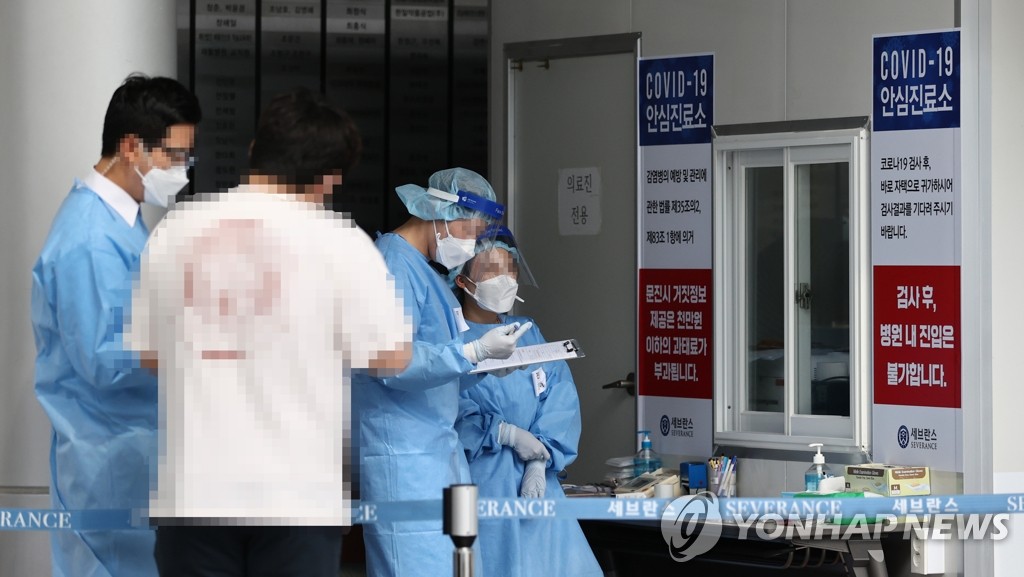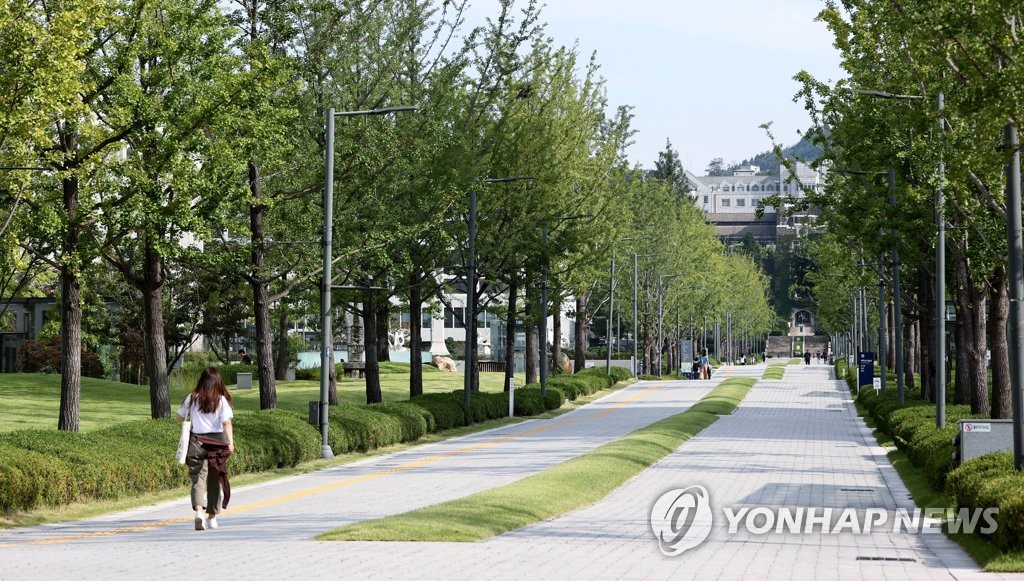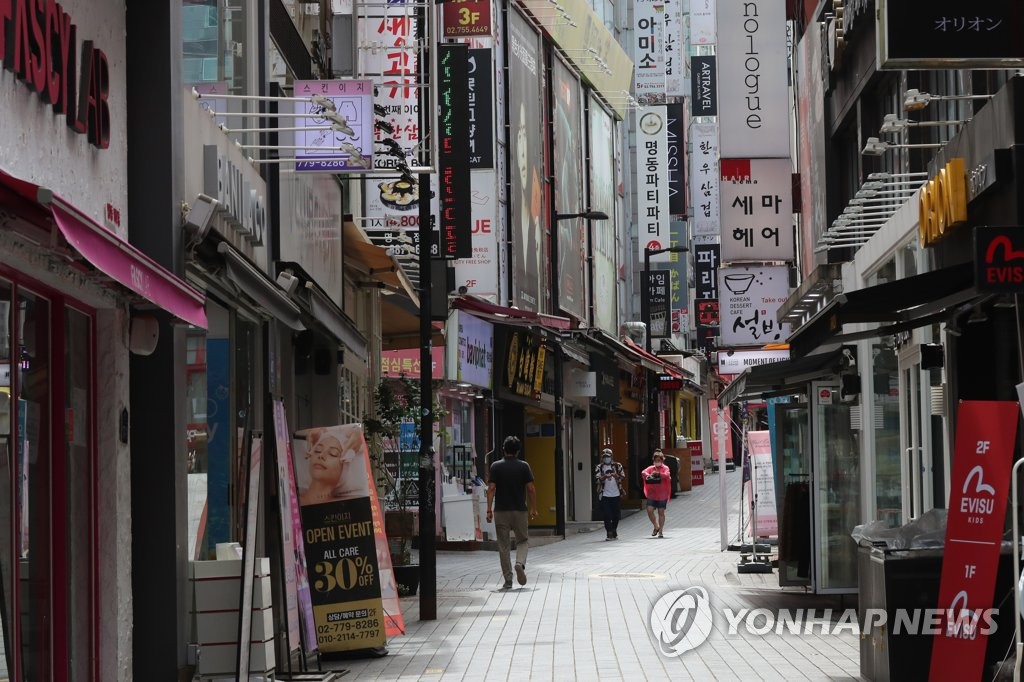- California Assembly OKs highest minimum wage in nation
- S. Korea unveils first graphic cigarette warnings
- US joins with South Korea, Japan in bid to deter North Korea
- LPGA golfer Chun In-gee finally back in action
- S. Korea won’t be top seed in final World Cup qualification round
- US men’s soccer misses 2nd straight Olympics
- US back on track in qualifying with 4-0 win over Guatemala
- High-intensity workout injuries spawn cottage industry
- CDC expands range of Zika mosquitoes into parts of Northeast
- Who knew? ‘The Walking Dead’ is helping families connect
New virus cases under 200 for 9th day, S. Korea undecided on easing virus measures
South Korea’s new virus cases stayed below 200 for the ninth consecutive day Friday, but the country is still undecided over whether to extend enhanced virus measures in the greater Seoul area due to sporadic cluster infections and untraceable cases.
The country added 176 more COVID-19 cases, including 161 local infections, raising the total caseload to 21,919, according to the Korea Centers for Disease Control and Prevention (KCDC).
Friday’s tally marked a slight increase from the 156 and 155 cases reported on Wednesday and Thursday, respectively.
South Korea, which even posted fewer than 10 daily cases in late April after suffering a record high number of infections in late February at 909, had been keeping the new virus cases at around 50 with some ups and downs.




Medical staff members work at Severance Hospital in western Seoul on Sept. 11, 2020. (Yonhap)
But on Aug. 14, the figure doubled from the previous day to reach a whopping 103. The recent spike was mainly attributable to cases tied to a conservative church in northern Seoul and an anti-government rally.
To curb the spread of the virus, South Korea adopted the Level 2 social distancing scheme for other parts of the country in mid-August, under which indoor meetings of more than 50 people and open-air gatherings of over 100 people are banned.
This will run through Sept. 20, though it could be extended. On the back of the efforts, the number of daily new cases has been gradually falling after hitting 441 additional cases on Aug. 27.
The country adopted an enhanced version of a social distancing scheme for the capital area in late August, which will run through Sunday unless South Korea decides to extend it again.
Under the updated measure, restaurants in the Seoul metropolitan area can operate normally from 5 a.m. to 9 p.m. but then can only offer takeout after that time. Franchise coffee chains, bakeries and ice cream parlors can only offer takeaway around the clock.
Health authorities have said a daily increase of around 100 COVID-19 patients is considered a manageable level under the current medical capability.
But the prolonged social distancing scheme is heavily weighing down the livelihoods of private businesses.
South Korea believes that while the number of new cases is showing signs of a slowdown, the country also needs to take various factors into consideration, including the reproduction rate, as well as the growing number of patients in critical condition.
“The numbers are clearly slowing, but the figures will continue to go through ups and downs,” Yoon Tae-ho, a senior health official, said during a daily briefing. “Asymptomatic patients can also lead to group infections.”
“Health officials have discussed that the country should still take a wait-and-see approach in regards to the extension of the social distancing scheme,” Yoon added, hinting that “a third option” was also on the table, without providing more details. “We will deliver more details over the weekend.”
“The decision will be made by considering the problems we have encountered while rolling out the ongoing social distancing scheme, as well as current situations,” KCDC Director Jeong Eun-kyeong said in a separate briefing.
The number of patients in serious or critical condition came to 175, up six from the previous day. Health authorities are worried that the recent spike will lead to shortages in hospital beds, as well as more deaths, as most of them are seniors.
Around 87 percent of the patients in such condition were aged 60 and above.
Of the newly identified local infections, 61 cases were reported in Seoul and 47 from Gyeonggi Province that surrounds the capital.
Other municipalities reported new infections, with the central city of Daejeon adding 10 cases and Incheon, west of Seoul, reporting eight new cases. South Chungcheong Province added 14 new patients.
Cases traced to Sarang Jeil Church in northern Seoul, a hotbed of the recent spike in new infections, stayed unchanged for a third day at 1,167.
Those tied to the anti-government rally in Seoul on Aug. 15 reached 564, up seven from the previous day.
Severance Hospital, one of the major general hospitals in Seoul, reported 19 cases, up nine from the previous day. There have been more cases identified throughout Friday, which were not yet reflected in the official tally.
Other sporadic cluster infections continued to pop up in the wider capital area.
A Buddhist facility located in western Seoul has reported 22 patients, up two from Thursday. A logistics center of e-commerce giant Coupang in eastern Seoul has reported three more infections, raising the caseload to 16.
The number of cases traced to a hiking club in the greater Seoul area reached 35, up six from the previous day.
The proportion of patients with untraceable infection routes over the past two weeks came to 23.4 percent, according to the latest data, also straining the country’s virus fight. A whopping 36.4 percent were linked to cluster infections.
Among the new cases added over the past few months, patients in their 60s and above accounted for 34 percent, according to the KCDC. Over the past three days, the figure shot up to 40 percent.
To prevent the spread of the virus, South Korea has decided to ban demonstrations with 10 or more participants in the capital city. On Oct. 3, a group of conservative activists vowed to stage anti-government rallies.
“We have inevitably made the decision to prevent the spread of the virus, as such rallies can lead to major outbreaks,” Yoon said, warning that unlawful gatherings will be dismissed by the police.
The country, meanwhile, reported 15 imported cases.
Three patients were from Australia. The Philippines, Uzbekistan and Indonesia accounted for two patients each. There were also cases from India, Qatar, Kazakhstan, Nepal and the United States.
South Korea reported four more deaths, raising the total to 350. The fatality rate came to 1.6 percent.
The total number of people released from quarantine after making full recoveries stood at 17,616, up 256 from the previous day. So far, 80.4 percent of the patients reported here have been cured.
South Korea has carried out 2,119,211 COVID-19 tests since Jan. 3. The country reported its first case on Jan. 20.











